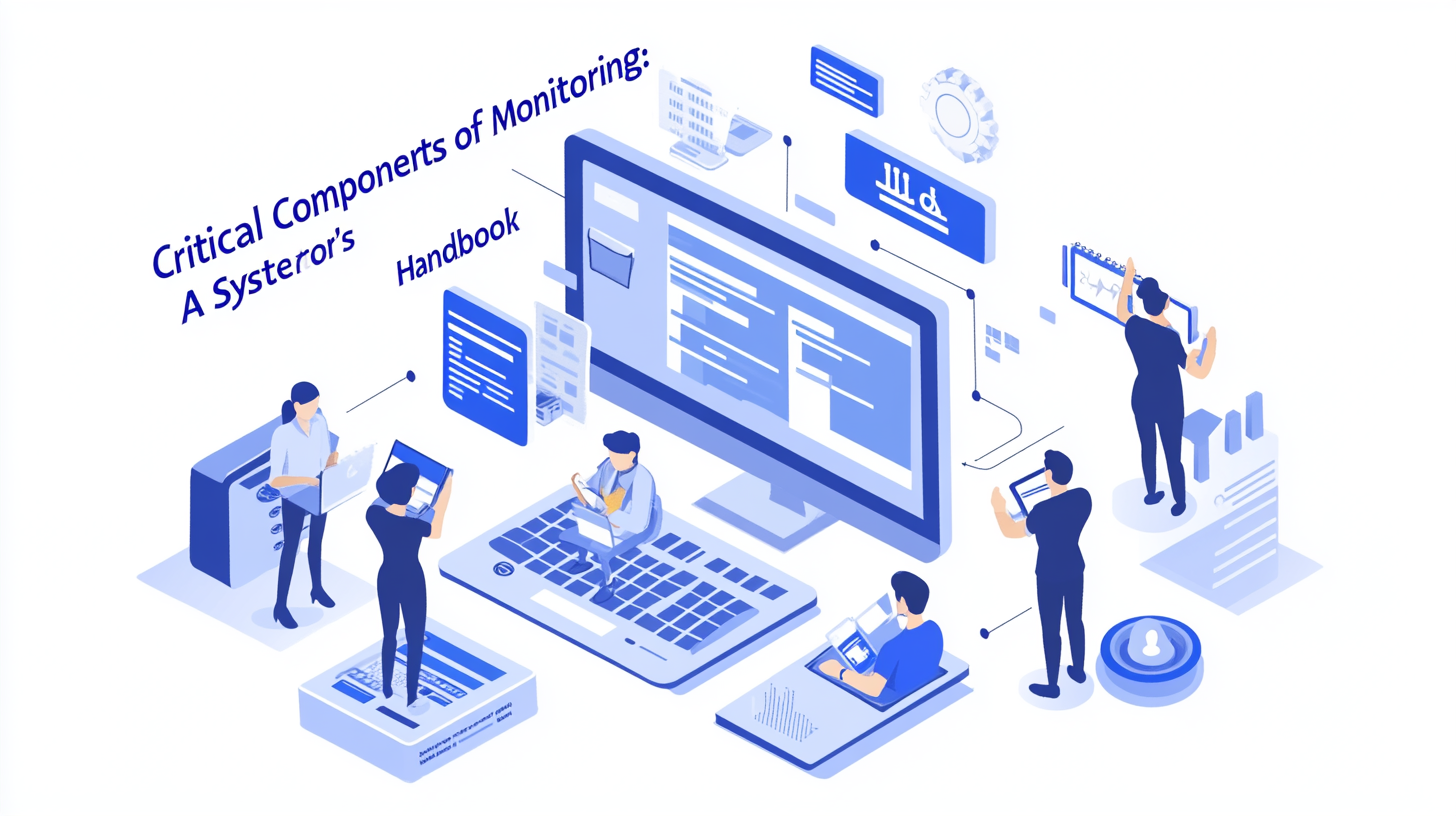Critical Components of Website Monitoring, A System Administrator's Handbook


Rez Moss
@rezmos1This comprehensive guide outlines the essential components that system administrators must monitor to maintain optimal website performance and reliability. Each section details specific metrics, their significance, and what constitutes healthy values.
1. Server-Level Monitoring
CPU Usage
- What to Monitor:
- Overall CPU utilization percentage
- Load averages (1, 5, and 15-minute intervals)
- Per-process CPU consumption
-
CPU throttling instances
-
Healthy Ranges:
- Average CPU usage should stay below 70%
- Load averages should not exceed number of CPU cores
- No sustained periods of 100% utilization
- Monitor for unusual spikes during normal operations
Memory Usage
- What to Monitor:
- Available physical memory
- Swap space usage
- Memory usage per process
-
Page faults and swap rates
-
Healthy Ranges:
- Available memory should not drop below 20%
- Swap usage should be minimal
- No continuous swap in/out operations
- Monitor for memory leaks in long-running processes
Disk Performance
- What to Monitor:
- Disk space usage and trending
- I/O operations per second (IOPS)
- Read/write latency
-
Inode usage
-
Healthy Ranges:
- Maintain at least 20% free disk space
- Average I/O latency under 10ms
- Inode usage below 80%
- Monitor for unexpected growth patterns
2. Network Monitoring
Connectivity
- What to Monitor:
- Network interface status
- Packet loss rates
- Network latency
-
Bandwidth utilization
-
Healthy Ranges:
- Packet loss should be near 0%
- Latency should be consistent with baseline
- Bandwidth usage under 80% of capacity
- No interface errors or collisions
DNS Health
- What to Monitor:
- DNS resolution time
- DNS record accuracy
- TTL compliance
-
DNS propagation
-
Healthy Ranges:
- DNS resolution under 100ms
- All records matching expected values
- No failed DNS queries
- Consistent resolution across global locations
SSL/TLS Certificates
- What to Monitor:
- Certificate expiration dates
- SSL/TLS protocol versions
- Cipher suites
-
Certificate chain validity
-
Critical Checks:
- Minimum 30-day warning before expiration
- No weak cipher suites enabled
- Complete and valid certificate chain
- Regular security assessment of SSL configuration
3. Application-Level Monitoring
Web Server Performance
- What to Monitor:
- Request processing time
- Active connections
- Error rates
-
Worker/thread status
-
Healthy Ranges:
- Request processing under 200ms
- Error rates below 1%
- Connection queue length within normal limits
- Worker pool utilization under 80%
Database Performance
- What to Monitor:
- Query response times
- Connection pool status
- Lock contentions
- Index usage
-
Query cache hit rates
-
Healthy Ranges:
- Query execution time within defined SLAs
- Connection pool utilization under 80%
- Minimal lock wait times
- Cache hit rates above 80%
Application Response Times
- What to Monitor:
- Time to First Byte (TTFB)
- Page load times
- API response times
-
Resource loading times
-
Healthy Ranges:
- TTFB under 200ms
- Page load under 3 seconds
- API responses under 500ms
- Static resource loading under 100ms
4. Security Monitoring
Access Patterns
- What to Monitor:
- Login attempts
- Failed authentications
- Traffic patterns
-
Administrative actions
-
Red Flags:
- Unusual login patterns
- Brute force attempts
- Unexpected traffic spikes
- Unauthorized access attempts
Security Headers
- What to Monitor:
- HTTP security headers
- Content Security Policy (CSP)
- CORS configuration
-
XSS protection headers
-
Best Practices:
- All security headers properly configured
- CSP without unsafe-inline/unsafe-eval
- Strict CORS policies
- Regular security header audits
5. Content Monitoring
Static Content
- What to Monitor:
- Resource availability
- Cache status
- Content integrity
-
CDN performance
-
Healthy Indicators:
- All resources accessible
- Proper cache headers
- Content matching checksums
- CDN serving expected content
Dynamic Content
- What to Monitor:
- API endpoints
- Form submissions
- Search functionality
-
User authentication flows
-
Critical Checks:
- All endpoints responsive
- Forms processing correctly
- Search results relevant
- Authentication working as expected
6. Business Transaction Monitoring
User Flows
- What to Monitor:
- Registration process
- Login sequence
- Checkout process
-
Critical user journeys
-
Success Metrics:
- Complete flow completion
- Expected response times
- Error-free transactions
- Proper state management
Error Tracking
- What to Monitor:
- JavaScript errors
- Server-side errors
- 404 errors
-
API errors
-
Healthy Ranges:
- Minimal JavaScript errors
- Server errors below 0.1%
- 404s limited to expected cases
- API errors properly handled
7. Performance Optimization
Resource Optimization
- What to Monitor:
- Image optimization
- Script loading
- CSS delivery
-
Font loading
-
Best Practices:
- Images properly sized and compressed
- Scripts loaded efficiently
- CSS optimized and minified
- Font display optimization
Caching Effectiveness
- What to Monitor:
- Browser cache usage
- Server-side cache hit rates
- CDN cache performance
-
Application cache status
-
Optimal Ranges:
- High browser cache hit rates
- Server cache utilization above 80%
- CDN offloading majority of traffic
- Appropriate cache TTLs
Implementation Recommendations
- Establish Baselines
- Document normal performance patterns
- Set appropriate thresholds
- Create baseline metrics for all components
-
Regular baseline reviews and updates
-
Alert Configuration
- Define clear alerting thresholds
- Implement alert severity levels
- Configure appropriate notification channels
-
Avoid alert fatigue through proper tuning
-
Documentation
- Maintain updated monitoring documentation
- Document all custom monitoring solutions
- Keep runbooks current
-
Regular review and updates of procedures
-
Regular Reviews
- Monthly performance reviews
- Quarterly capacity planning
- Annual monitoring strategy assessment
- Regular tool and process evaluation
Effective website monitoring requires attention to multiple layers of the technology stack. By monitoring these critical components, system administrators can ensure optimal website performance, reliability, and security. Regular review and adjustment of monitoring strategies ensure continued effectiveness as technology and requirements evolve.